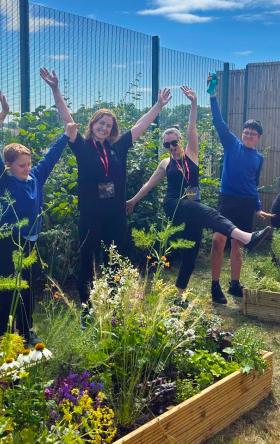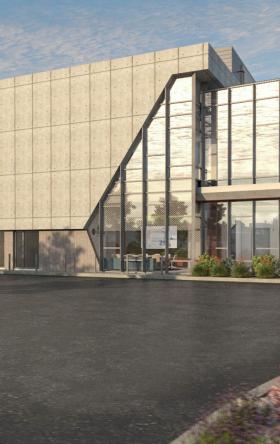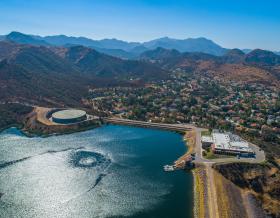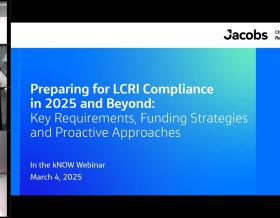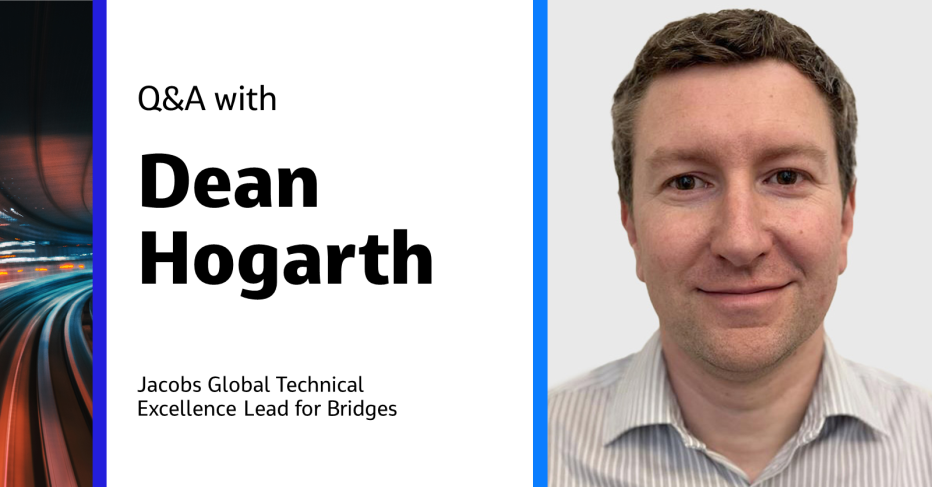
Public transportation systems, valued as some of the most equitable and sustainable modes of transportation, connect communities and help stimulate economic development.
Expanding these complex systems and adding more advanced solutions, such as high-speed rail, to meet public demand can be an intricate, high-intensity ride. Whether the journey includes keeping pace with capacity building and accelerating technology innovations, ensuring safety and security or maintaining transport networks, Jacobs is on board to serve all aspects of high‐speed and conventional passenger rail, freight and logistics, mass/public transit and innovative bus solutions.
We’re a globally recognized leader in the safe and efficient delivery of rail and transit solutions – from planning, design and development to delivery and management.
In this Q&A, we connect with one of our global teammates, technical excellence leader for bridges, Dean Hogarth, to discuss trends and technology shaping transportation of tomorrow.
Tell us a bit about your background and how it shapes your approach.
I have been fortunate in my career to contribute to the successful delivery of several international major crossings and projects. The experience I have gained working with diverse international teams and partners on these projects has enabled me to develop and adapt my work approach to different cultures, working methods and technical approaches.
Additionally, my international experience allows to me bring a collaborative approach to projects along with my technical expertise in cable supported bridges, rail structures and highways.
How do you help clients think differently to respond to future challenges?
I work with clients collaboratively to understand their aspirations, constraints and challenges and assist them in delivering the best solution to meet their needs. I leverage my breadth of previous experience, knowledge and lessons learned to prompt, inform, and collaboratively challenge clients’ decision making and thought process around future challenges.
I bring a global perspective to our clients resulting from my range of international experience and an ability to leverage current and emerging technologies. Because of my role as Jacobs Global Technical Excellence Lead for Bridges, I have been privileged to work for organizations and work on structures throughout the project lifecycle providing me with a wide perspective and range of skills to assist clients in developing the optimal solution.
With more than one million people expected to call Seattle home by 2044, what’s a trend you’re seeing in the Seattle area lately?
Connecting communities together through frequent, reliable and rapid transport solutions such as light rail and reducing car journeys is a trend that has been seen across the most prominent and desirable cities around the globe.
With the anticipated population growth across Seattle, there is an opportunity to expand the existing light rail network to a wider section of the community; bringing passengers closer together and removing the reliance and pressure on the existing highway network.
How do you see data solutions changing how we deliver transportation solutions going forward?
Technology – and figuring out how we best deploy it and how we maximize its potential – is changing rapidly and, in many ways, is accelerating. Some potential development paths are currently clear to us and being actively progressed, other new opportunities are anticipated to become available as technology further develops.
Within transportation, ongoing themes around collaboration and data, such as common data environments, data collection and storage, BIM modelling and digital twins, and in-depth structural health monitoring, are being augmented with the move toward model only delivery, design automation tools, the development of machine learning and artificial intelligence (AI) as the technological solutions available develop. Together these present an opportunity to work more collaboratively, develop more efficient solutions effectively, and store and share more information structures throughout their lifecycle.
What are some lessons learned from your experience with urban design?
The requirement for any long-span cable supported bridge reflects the unique constraints that exist at the location it is constructed. By their nature, these bridge forms are typically only deployed where other forms are unable to accommodate these constraints. Some lessons are therefore always unique to a particular bridge and its constraints whereas others can be applied to the subsequent bridge.
Long-span cable supported bridges are complex structures often significantly influenced by their construction methodology rather than just final function. This drives the need to understand and evaluate the unique constraints of a bridge and collaborate widely, including early contractor involvement. Full understanding and evaluation of the constraints at project inception is critical to inform the subsequent development of the solution through all phases of the project. Collaboration and in particular early contractor involvement throughout the development is essential to ensure that construction methodology, planning and logistics are embedded into the development process at the outset, that the constructability requirements are understood, acknowledged by all parties and adequately accommodated. This will help ensure that the final product is a true reflection of the needs of all stages of the life cycle.
Is there a project you're particularly proud of?
I’ve been fortunate to contribute to the delivery of some fantastic projects during my career. I remember one project in particular where I joined the team during the construction phase of the project to build a major six-lane cable stayed bridge over the River Mersey, alongside the upgrade and modification of the existing urban highway network in the U.K. The project had an array of complex interfaces from the environmental, statutory, technical, and contractual perspective, which required collaboration between the parties to ensure the successful delivery of the project. I formed part of the Technical and Contractual Advisors team for the client organization, embedded within the client organization and seamlessly integrated to form a single entity to steer the construction phase of the project.
The most important aspects of the project were collaboration and relationships, both within the client’s team and across the wider parties. These were vital to the rapid establishment of the trust built up within the integrated client team permitting the team to function seamlessly as a single entity between the client organization and the wider parties delivering the project. The outcome of this is reflected in the product the teams successfully delivered together as well as the lasting relationships established among team members.
About the interviewee

Dean Hogarth is an experienced and dynamic bridge engineer who specializes in the design of major crossings and cable supported bridges. He has been integral to the design and construction of some of the largest and most complex bridge and rail structures worldwide. Dean is currently Jacobs Global Technical Excellence Lead for Bridges, responsible for stewardship and coordination of Jacobs bridges-related technical aspects worldwide.
In addition to his strong technical background, what sets him apart is his focus on proactive and innovative problem solving. Dean is not one to be confined by conventional practices or approaches if a more efficient or cost-effective solution exists. He was a key member of the detailed design team working on Dubai Metro Extension 2020, where he undertook the rail-structure interaction design for key portions of the route for this light rail located in a dense urban environment. He was able to overcome narrow rail-structure interaction tolerance challenges on the viaducts with very tight curves by developing the concept and baseline design for a low maintenance lateral continuity device that limited differential displacement between adjacent viaduct units and rails thus permitting the use of typical viaduct units.
Dean is an effective communicator who likes to keep clients engaged in the design process each step of the way, ensuring that the final product meets their long-term goals and priorities.
